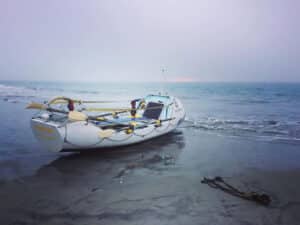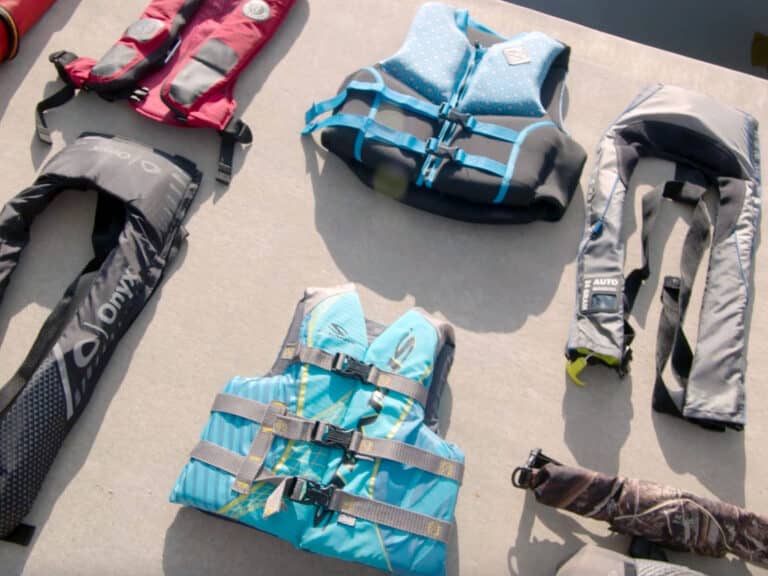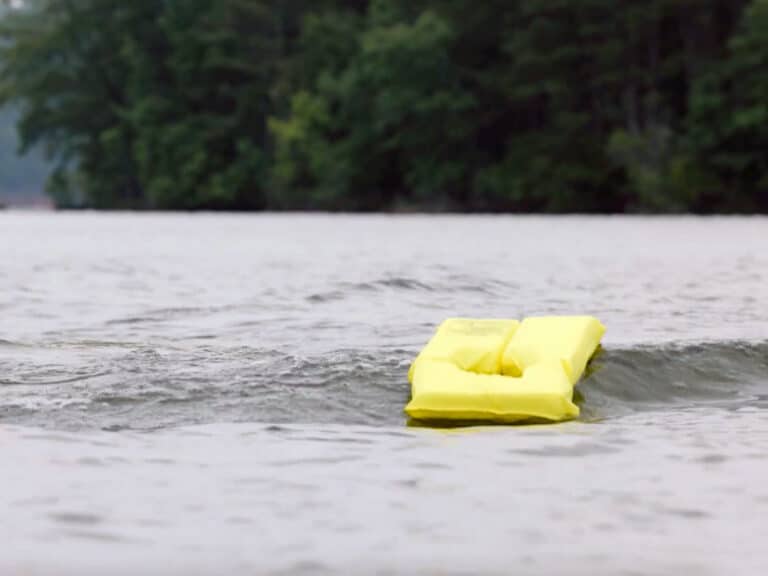
The recent media coverage of the sinking Italian cruise ship and the loss of a fishing boat off Barnegat Light, New Jersey — which took the life of a local captain and touched many great friends in that community — has shone a light on emergencies at sea. When the airwaves are filled with the news of such accidents, the topic of safety at sea quickly moves to the forefront of national consciousness. However, contemplating and preparing for a host of unfortunate scenarios is always on the minds of the experienced captain and crew.
Taking a boat out on the ocean is a serious business, and every owner and captain must know where the safety equipment is and understand how to deploy it. I’ve spent a lot of time in this game, and I would say that very few crew members really know the limitations of their safety equipment or — even worse — how to use it.
Back in the late 1980s, Ed Murray, of the famed Murray Brothers, produced a comprehensive video on safety at sea called Survival. If you can find a copy, it is well worth watching. Even though it is nearly 25 years old, the information dealing with survival at sea is timeless and invaluable for anyone venturing offshore.
I’m a firm believer in pre-planning and taking all the necessary steps to eliminate potential problems. With the boats I manage, safety gear is reviewed annually, and all potential purchases are diligently researched. We buy only the highest-quality, proven, and U.S. Coast Guard–approved equipment, and this is especially the case with life rafts.
The life raft represents the key piece of equipment in our safety program. Several reputable manufacturers produce high-quality life rafts, but your first step in picking the right one for your vessel is being honest with yourself and figuring out what your actual needs are — doing so could save lives should you ever face the terrible prospect of abandoning ship.
Life rafts usually fall into two categories: coastal and offshore. After talking with some rescue experts, we learned that there are several criteria that you should consider when picking a raft. Obviously, you must pick a raft that can hold as many of the folks you plan to have aboard as possible, and it must stow away in a readily accessible place. It also must be easy to deploy, and easy to get into, even in the most unfavorable conditions. A good raft also allows for an easy exit once rescuers arrive on the scene.
Coastal rafts are engineered and designed for areas where the U.S. Coast Guard is within a reasonable rescue distance; but they are still safe and can be used offshore. For open-ocean transit, long-distance journeys and international travel, offshore-class rafts need to keep survivors safe at sea for longer periods of time, when rescue personnel are farther away. You can find more substantial coastal rafts and less substantial offshore rafts, so there is a middle ground — just remember to always think about the worst-case scenario, because once you are in a raft, it has arrived.
There are many reputable safety-equipment manufacturers, including the U.S. companies Switlik and Winslow, making high-quality products. Charles Daneko of the Winslow LifeRaft Company of Lake Suzy, Florida, says that making the raft easy to deploy is key. Placement on the boat is also critical.
Although you see quite a few of them up there, one of the worst places to mount a life raft is on the bow. It’s highly unlikely that anyone will be able to get forward in an emergency situation to launch and clear the raft, even if it has an automatic-deployment capability.
Try to pick as light a raft as possible — light enough so that the average person can lift it and get it overboard. You can’t always rely on the biggest guy in the crew — he might be unconscious at that time.
Manufacturers recommend mounting rafts in their hard case, where they can be thrown overboard as easily as possible. It’s also recommended that a soft valise-style raft be kept as close to the helm or vessel exit as possible. That cannot always be done on sport-fishing boats, where an uncluttered and fishable cockpit is desirable.
On the boats I manage, in addition to the two life rafts mounted on the hardtop, we put an extra valise-style raft under a bridge seat. Most sport-fishing captains mount their life rafts on the hardtop to allow them to open without obstruction when the hydrostatic release is triggered. Even so, it’s also a good idea to mount the raft in such a way so that you can access it manually, so you can deploy the raft before the boat goes down, if possible. The sooner you can get in the raft, the better off you are.
With that being said, however, I highly recommend doing whatever you can to keep the boat afloat as long as possible. Be prepared with pre-made plugs of various sizes, and be sure that access to all bilge areas is clear and clutter-free. Now’s the time to exercise your main engine emergency bilge intakes to be sure they are working in case you start taking on water in the future.
Moment of Truth
Imagine being tossed around in the water, disoriented, gasping for air. The last thing you need to be doing is swimming circles around your raft trying to get into it. Your raft should come with multiple boarding ladders and plenty of handles all the way around it so that you can easily grab them and use them to hang on or to pull yourself out of the water and into the raft with a life jacket on.
Switlik’s Andrew Goetting, from Trenton, New Jersey, says that it’s important not to have to fight through any extra lines or have to navigate through some tiny door when trying to enter the raft. He recommends that you physically inspect any raft you plan on buying to make sure you can get in and out of it.
Once you’re safely inside, the raft needs to provide comfort and safety. The first criteria is stability, so choose a raft with ballast bags substantial enough to keep the raft from capsizing in high swells. These bags also keep the raft in the water under the punishing downdraft thrown off the rotors of a rescue helicopter.
The raft needs to be constructed with high-quality components and assembled using proven methods in order to withstand horrific conditions. Raft construction begins with computer-engineered designs and high-tech specialty fabrics cut with computer-controlled cutting machines. Assembly specifications are especially rigid, with overlapped seams, multichamber flotation tubes and custom-engineered adhesives. Blends of specially engineered fabrics for different areas of the raft are used, as well as high-tech urethane coatings for puncture and abrasion resistance.
A raft’s main job is to protect its occupants from the elements — primarily the sun and cold. A properly constructed and supported canopy provides protection from hypothermia and exposure, which is critical to the survival of those inside. Remember, it’s highly unlikely that you will step into the raft bone-dry while sipping a glass of chardonnay — you’ll be wet and storm-tossed once you make it into the raft. Getting warm and staying warm is very important. The canopy not only needs to be able to stay securely fastened to the raft, but also needs to open easily to get a survivor out and into a basket when the rescue swimmer and helicopter arrive.
Goetting emphasizes that any raft must withstand the rigors of the waves and the pull of the sea anchor, as well as the constant movement and stress caused by the occupants. A comprehensive survival kit, including first aid, flares, and nonperishable water and food rations, must also be on board.
Let’s say there’s a sailfish bite off the Martini Glass near Boynton Beach, Florida. It’s January, the water temperature is 76 degrees, the air temperature is 65, and there are no boats around you. From the time you key the mic and get a response to your Mayday, it’s at least a 30-minute wait to muster the rescue crew and get the bird in the air. Let’s say you were lucky and you had 10 minutes between the time the Coast Guard received your Mayday call and when you had to hit the water. By the time the helicopter is in the air, you’ve already been in the water 20 minutes. Add in flight time, establishing a search pattern with your drift from current and wind, and the search. If you are very lucky, the helicopter from the station in Miami will be over you in slightly over an hour. That’s a long time to be treading water. Every second that you’re immersed, your core body temperature is dropping. Once hypothermia starts to set in, you’re in trouble.
Now, imagine being a hundred miles out in the Gulf of Mexico, or out on the canyons off New Jersey. You’d be in the water for at least two hours — if you’re lucky.
Do your homework, evaluate your options, and spend the money when it comes time to shop for a high-quality life raft. It’s fully worth it, especially once you have to go over the rail.
The U.S. Coast Guard is asking all boat owners and operators to help reduce fatalities, injuries, property damage, and associated healthcare costs related to recreational boating accidents by taking personal responsibility for their own safety and the safety of their passengers. Essential steps include: wearing a life jacket at all times and requiring passengers to do the same; never boating under the influence (BUI); successfully completing a boating safety course; and getting a Vessel Safety Check (VSC) annually from local U.S. Coast Guard Auxiliary, United States Power Squadrons(r), or your state boating agency’s Vessel Examiners. The U.S. Coast Guard reminds all boaters to “Boat Responsibly!” For more tips on boating safety, visit www.uscgboating.org.








